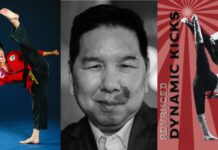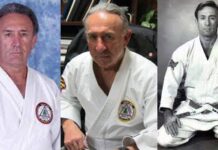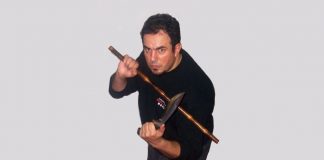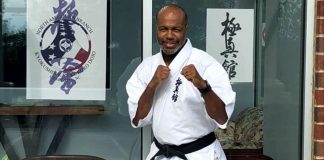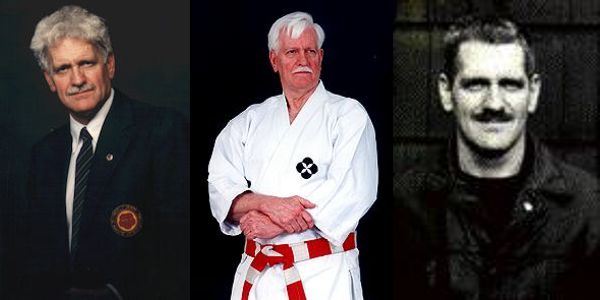 George Anderson was born in Akron, Ohio in 1931. His father, William E. Anderson, was a respected teacher who had taught in Egypt. His mother was Winifred Pape of Utica, New York, a noted musician. As a youth, Anderson won honors as a student of violin at the Cleveland Institute of Music and later was a scholarship student at the University of Wichita. He also studied accounting and Spanish at the University of Akron, where he has been teaching since the late 1960’s.
George Anderson was born in Akron, Ohio in 1931. His father, William E. Anderson, was a respected teacher who had taught in Egypt. His mother was Winifred Pape of Utica, New York, a noted musician. As a youth, Anderson won honors as a student of violin at the Cleveland Institute of Music and later was a scholarship student at the University of Wichita. He also studied accounting and Spanish at the University of Akron, where he has been teaching since the late 1960’s.
Swimming competitively in high school, George Anderson was one of the first Red Cross Certified Water Safety Instructors in the United States. In 1956, he attended machine accounting school in Chicago and was admitted to the National Association of Cost Accountants in 1957. While studying Spanish at the University of Akron he helped found the Club Hispano – Americano, serving as the Charter Secretary. Enjoying racing, he was a founder of the Akron Go-Cart Club, the BMW Motorcycle Club, and a consistent winner in drag racing competition. His company also sponsored several racing cars.
George Anderson started martial arts training in 1950, beginning with elementary jujitsu, and progressing though karate, a rough shotokan karate, judo, kung fu, and taesoodo, as the Korean art was then called. After many years of study, he earned his black belt in the early sixties under Il Joo Kim, a student of Grandmaster Kim Pyung Soo, a student of Grandmaster Chull Hee Park, founder of the Kang Duk Won Korean Kwon-bop Association, himself a student of In Byung Yoon, a Shihan of the Shudokan and the founding master of much of what is now Taekwondo. Anderson became the General Secretary of Kim’s newly formed Taekwondo Association of Ohio.
In the late sixties, Il Joo Kim changed affiliations to coordinate with his friend and newly arrived “brother,” Tong Choo Choi, who was affiliated with the Song Moo Kwan (Korean Shotokan), whose founder, Ro Byung Jick, was a direct student of Gichin Funakoshi, and Anderson was obliged to follow.
 During the 1960’s and early 70’s, Anderson was extremely active in karate, sparring hours every day, teaching, and gaining a reputation as a good hard-nosed practitioner. As he was nearly forty when competition really became popular, and as he was in demand as a referee, he turned his attention that direction. Most of his involvement at that time was with the East Coast Korean group, and he had a close association with Ki Whang Kim, Richard Chun, Henry Cho, Kang Rhee, Kim Soo Jin, Jhoon Rhee, Mon Soo Park, and Chong Lee to name a few.
During the 1960’s and early 70’s, Anderson was extremely active in karate, sparring hours every day, teaching, and gaining a reputation as a good hard-nosed practitioner. As he was nearly forty when competition really became popular, and as he was in demand as a referee, he turned his attention that direction. Most of his involvement at that time was with the East Coast Korean group, and he had a close association with Ki Whang Kim, Richard Chun, Henry Cho, Kang Rhee, Kim Soo Jin, Jhoon Rhee, Mon Soo Park, and Chong Lee to name a few.
Receiving his third dan from Grandmaster Ro, Anderson founded the Central Taekwondo Association with Larry Lunn, Bob Chaney, Dan Willis and himself as founders. As George Anderson was Senior, he was elected Chairman. This organization grew rapidly to one of the largest in the USA at that time and became interested in national affairs.
Bob Chaney allegedly was first referee in the new AAU Karate upon returning from Japan, appointed Anderson to many important posts, which finalized with his being certified as a World Union of Karatedo official at the World Championship in Long Beach, CA. From this position and as the head of very large American association, Anderson helped sponsor the separation of AAU Taekwondo and AAU. Remaining in both sections, he was appointed Public Relations Co-Chairman of the AAU Taekwondo and also Executive Board Administrator for AAU Racquetball. Active in the AAU Taekwondo (the precourser of the US Taekwondo Union) he was the leader of the successful AAU team that won the team championship at the National AAU Taekwondo Championship in Berkeley California in the 1970’s. Where he earned a Pan-American Taekwondo Officials Certification.
Taekwondo being well seated in Korean hands, his interest soon turned to karate and he became the AAU Karate International Representative, an International Judge, and was elected the Secretary General of the Pan American Union at the World Karate Championship in Madrid Spain.
Returning to the USA, Anderson was elected the President of the AAU Karate. Shortly thereafter was elected the President of the powerful World Referee Council (which served as the organizing committee and the technical committee) in at the World Championship in Taiwan.
George Anderson also authored the Constitution of the Pan-American Union in Spanish and soon was elected the President of that Union in at a Technical Congress in Venezuela.
He held the positions of President of the World Referee Council, The President of the Pan American Referee Council, The President of the Pan American Union of Karatedo Organizations, and the President of the National AAU Karate Committee. He was soon to be elected as the First Vice President of the World Union. He now assumed the responsibilities of Director for the World Medical Commission.
Succeeding in leading the charge to get karate recognized by the United States Olympic, he was elected to represent all the non-Olympic sports to the board of the USOC and served four years in that position.
While all this progressed, his study continued. He joined the United States Karate Association under Grandmaster Robert Trias and was appointed style-head for the Korean and international systems and International Director for the USKA Police Liaison Division, under which he directed the greatest National Police Training seminar seen in this country to date. He earned degrees in judo and jujitsu and other styles of karate. (The last major seminar by the famous judo master Sadaki Nakabyashi was at held at his dojo). At the time of Grandmaster Trias’ death, George Anderson was the senior dan in the USKA and was a member of the prestigious Trias International Society. He became a fast friend of Grandmaster Phillip Koeppel who has continued to be his kobudo mentor.
George Anderson was always intrigued by the problems of law enforcement. He attended many seminars covering bombs, hostage negotiations, etc. where he attained numerous certifications pertinent to police work. Hanshi Anderson served as consultant and advisor to various police and law enforcement groups in the United States and around the world and was considered an outstanding authority on officer survival training as well as the sporting aspects of karatedo.
Professor Anderson lectured widely on physical education and the martial arts and he supervised countless championships and official training seminars. Many of the world’s greatest masters hang certificates with his signature on their wall.
As an organizer, Hanshi Anderson was peerless. He was the Technical Director at the First World Cup in Budapest, where he directed the initial unification event of the World Karate Federation (WUKO) and the International Amateur Karate Federation (IAKF), and the First World Collegiate Karate Championships in Kobe, Japan. The First World Technical Congress was held in Akron, Ohio and was chaired by the Grandmaster Anderson.
He engineered the successful drive to have karate entered into the Pan American Games as a medal sport in , serving a quadrennium as a Director of the United States Olympic Committee representing all the Affiliated Sports Organizations. Having reached the Pan-American Games, Professor Anderson presided over this historic karate event, receiving universal acclaim for achieving the impossible.
Emerson said “The reward of a thing well done is to have done it.” However, for Anderson there are other accolades. He was recognized as 9th Dan Hanshi in Seibukan, Kyoto, Japan by Grandmaster Masafumi Suzuki, 10th Dan, Principle of the All Japan Budo Federation, the Zenkoran. When Grandmaster Suzuki died, Hanshi Anderson was requested to and gave the eulogy at his funeral in Kyoto. Grandmaster Suzuki directed Anderson to accept the 10th dan upon his death. At the funeral, the seniors of the Seibukan were asked to support Grandmaster Anderson.
Hanshi Anderson was also recognized by the master of Grandmaster In Sun So as a 9th Dan in the Kido Federation and Grandmaster Nam Suk Lee of the Korean Changmookwan, which he represented as a 9th Dan.
Hanshi Anderson claimed Grandmaster Park Chull Hee of the Kang Duk Won as his direct teacher and received regular lessons from him.<
O-Sensei George Anderson appeared in numerous magazines, newspaper’s and reviews. Among these honors were: Induction into the Black Belt Hall of Fame in 1986 , featuring on the covers of Karate Illustrated magazine, April 1992. and again on the cover of Karate Profiles magazine, August 1993, and appearance on TV and the front pages of many international newspapers Hanshi Anderson is an unusual man. Besides holding high dans in many martial arts, he is an accomplished violinist, an inspired artist, and an entrancing speaker. He has been called the renaissance man of the martial arts and in constant demand as a lecturer and teacher. His views on the arts and their relationship to the values inherent in martial arts education. are leading the way towards the 21st century.
He and his wife Joan had been married nearly 50 years and had two sons, three daughters and nine grand children, and one great grand child.
George Anderson lived in Akron, Ohio.
Hanshi George Anderson passed away on Thursday, August 6, 2009 at age 77.
(Read HanshiGeorge Anderson Eulogy)


